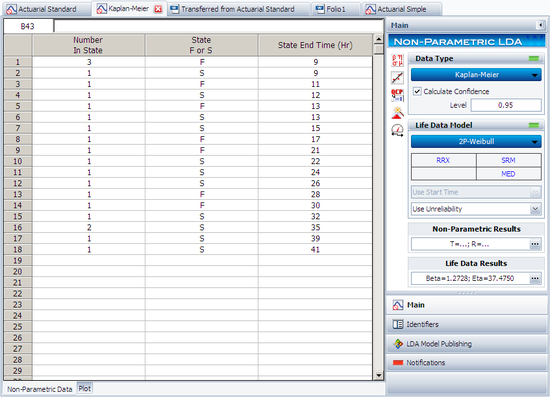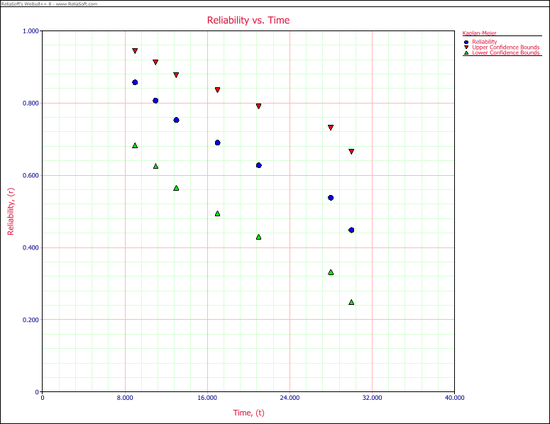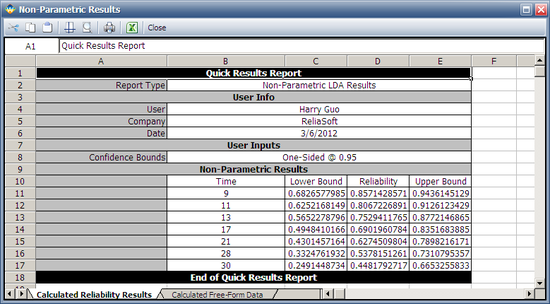Weibull++ Non-Parametric LDA Plot Example
New format available! This reference is now available in a new format that offers faster page load, improved display for calculations and images and more targeted search.
As of January 2024, this Reliawiki page will not continue to be updated. Please update all links and bookmarks to the latest references at Weibull examples and Weibull reference examples.
This example demonstrates how to use the Weibull++ non-parametric life data analysis (LDA) folio.
Assume we have the following data.
| Number in State | State F or S | State End Time |
| 3 | F | 9 |
| 1 | S | 9 |
| 1 | F | 11 |
| 1 | S | 12 |
| 1 | F | 13 |
| 1 | S | 13 |
| 1 | S | 15 |
| 1 | F | 17 |
| 1 | F | 21 |
| 1 | S | 22 |
| 1 | S | 24 |
| 1 | S | 26 |
| 1 | F | 28 |
| 1 | F | 30 |
| 1 | S | 32 |
| 2 | S | 35 |
| 1 | S | 39 |
| 1 | S | 41 |
Analyze the data set using the Kaplan-Meier method.
Solution
Enter the data in a non-parametric LDA folio. On the folio's control panel, enter a confidence level, as shown next.
The following plot shows the results, where the reliability at each failure time is calculated and plotted, along with the confidence bounds.
Because the analysis uses a non-parametric method, only the reliability at the observed failure times can be calculated. Non-parametric methods cannot be used for extrapolation and interpolation.
The following report shows the estimated reliability values and the associated confidence bounds.



